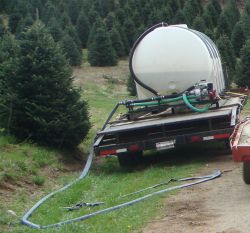High Pressure Sprayers
go.ncsu.edu/readext?298600
en Español / em Português
El inglés es el idioma de control de esta página. En la medida en que haya algún conflicto entre la traducción al inglés y la traducción, el inglés prevalece.
Al hacer clic en el enlace de traducción se activa un servicio de traducción gratuito para convertir la página al español. Al igual que con cualquier traducción por Internet, la conversión no es sensible al contexto y puede que no traduzca el texto en su significado original. NC State Extension no garantiza la exactitud del texto traducido. Por favor, tenga en cuenta que algunas aplicaciones y/o servicios pueden no funcionar como se espera cuando se traducen.
Português
Inglês é o idioma de controle desta página. Na medida que haja algum conflito entre o texto original em Inglês e a tradução, o Inglês prevalece.
Ao clicar no link de tradução, um serviço gratuito de tradução será ativado para converter a página para o Português. Como em qualquer tradução pela internet, a conversão não é sensivel ao contexto e pode não ocorrer a tradução para o significado orginal. O serviço de Extensão da Carolina do Norte (NC State Extension) não garante a exatidão do texto traduzido. Por favor, observe que algumas funções ou serviços podem não funcionar como esperado após a tradução.
English
English is the controlling language of this page. To the extent there is any conflict between the English text and the translation, English controls.
Clicking on the translation link activates a free translation service to convert the page to Spanish. As with any Internet translation, the conversion is not context-sensitive and may not translate the text to its original meaning. NC State Extension does not guarantee the accuracy of the translated text. Please note that some applications and/or services may not function as expected when translated.
Collapse ▲ High pressure sprayers are high volume sprayers with a gasoline powered engine that apply 150 to 500 gallons per acre under pressures ranging from 150 to 400 psi or more. They provide the most thorough coverage of Christmas trees and therefore the best control. However, applying pesticides with a high pressure is also labor intensive because each tree is treated individually and it is therefore the most expensive means of applying a pesticide. Hard to control pests such as the elongate hemock scale and balsam woolly adelgid require the use of high pressure sprayers in most instances.
High pressure sprayers are high volume sprayers with a gasoline powered engine that apply 150 to 500 gallons per acre under pressures ranging from 150 to 400 psi or more. They provide the most thorough coverage of Christmas trees and therefore the best control. However, applying pesticides with a high pressure is also labor intensive because each tree is treated individually and it is therefore the most expensive means of applying a pesticide. Hard to control pests such as the elongate hemock scale and balsam woolly adelgid require the use of high pressure sprayers in most instances.
The high pressure sprayer may have a diaphragm or piston pump. The motor and pump are typically mounted on a frame along with a large water tank that holds 50 to several hundred gallons of spray solution, all of which fits in the bed of a pick-up or on a trailer. By-pass pressure is released into the tank, providing agitation. Mechanical agitation may also be built into the sprayer. Pressures can be set very high, but use at around 200 psi is typically adequate. High pressure sprayers are equipped with one or two hoses with a handgun nozzle. Hoses are typically at least 200 feet. The gun and nozzle can vary and typically have a quick-release attachment. The hose is dragged through the field, and each individual tree sprayed.
Advantages
- provide good penetration and coverage of plant surfaces
- can reach the trunk of the tree as well as tops of even seed orchard trees
- usually well-built and long-lasting if properly cared for
Disadvantages
- large amounts of water and fuel needed
- time consuming
- most require 2-man teams to work the gun and pull the hose
- results in pesticide exposure for the applicator working the gun
- can’t operate at night when pollinators are not present
- high pressure may produce fine droplets that drift easily
Most Effective Spray Pattern
How trees are sprayed will determine coverage and therefore control. The best controls are obtained when only 2 or 3 rows are treated at a time and each tree is sprayed from opposite directions. To get full canopy coverage of heavy density trees, each side of the tree may be sprayed for several seconds, sweeping the spray across the entire area.


